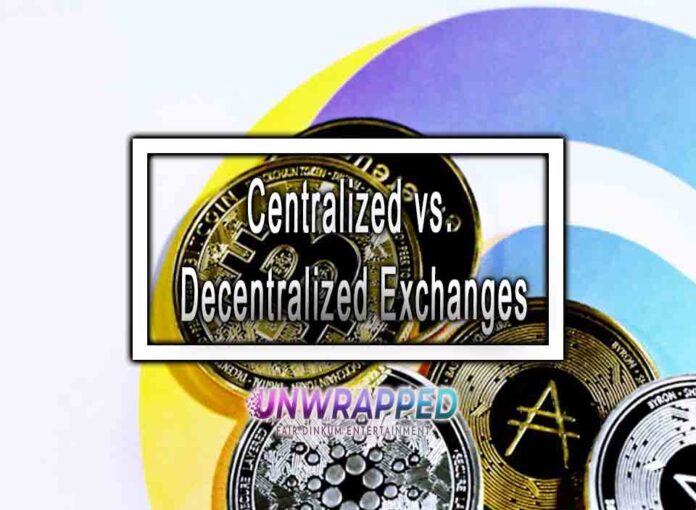Introduction
In the ever-evolving landscape of cryptocurrency trading, the choice between centralized and decentralized exchanges has become a pivotal decision for investors. As the popularity of cryptocurrencies continues to soar, individuals seek efficient and secure platforms to trade their digital assets. Understanding the pros and cons of these two exchange types is crucial for making informed trading decisions. In addition, if you are interested in digital assets, you may consider knowing about the NFTs and Virtual Collectibles.
Centralized Exchanges: A Familiar Terrain
Centralized exchanges have been the go-to choice for most cryptocurrency traders due to their familiarity and ease of use. These platforms act as intermediaries, providing a centralized marketplace for buyers and sellers to trade various digital assets. Users are required to create accounts, complete KYC procedures, and deposit funds into accounts managed by the exchange. One of the main advantages of centralized exchanges is their user-friendly interface, making them accessible to both beginners and experienced traders alike. This accessibility is particularly appealing to those who value simplicity and convenience in their trading experience.
Pros of Centralized Exchanges
Liquidity: Centralized exchanges typically offer higher liquidity due to the large number of users actively trading on the platform. This translates to quicker execution of orders and narrower bid-ask spreads.
Customer Support: Centralized exchanges often provide customer support services, which can be crucial for users who encounter technical issues or have inquiries about their accounts.
Variety of Cryptocurrencies: These exchanges usually list a wide range of cryptocurrencies, allowing traders to diversify their portfolios and explore new investment opportunities.
However, the centralized nature of these platforms comes with its share of drawbacks.
Cons of Centralized Exchanges
Security Concerns: Since centralized exchanges store users’ private keys and funds in a single location, they are more susceptible to hacking attacks. Numerous high-profile security breaches have occurred in the past, leading to substantial losses for traders.
Lack of Control: Users on centralized exchanges entrust their assets to the platform’s management, which can lead to issues of control and ownership over funds.
Censorship and Regulation: Centralized exchanges are subject to government regulations and censorship. This can result in limitations on trading activities or even the suspension of accounts in certain jurisdictions.
Decentralized Exchanges: Empowering Financial Freedom
Decentralized exchanges, often referred to as DEXs, operate without a central authority or intermediary. Instead, they utilize smart contracts and blockchain technology to facilitate peer-to-peer trading directly between users. The rise of DEXs aligns with the ethos of cryptocurrency itself – decentralization and autonomy.
Pros of Decentralized Exchanges
Enhanced Privacy: DEXs typically do not require users to provide personal information or complete KYC procedures, preserving their privacy.
Security: As users retain control of their private keys and funds, the risk of large-scale hacking attacks is significantly reduced.
Reduced Counterparty Risk: In a DEX, users trade directly from their wallets, eliminating the need to trust a centralized entity to hold their funds.
However, decentralized exchanges are not without their challenges.
Cons of Decentralized Exchanges
Liquidity Constraints: DEXs often struggle with lower liquidity compared to their centralized counterparts, leading to potentially slower order execution and wider spreads.
Complexity: The user interfaces of many DEXs can be intimidating for beginners, as they require a certain level of familiarity with blockchain technology and wallet management.
Limited Trading Pairs: DEXs may not offer the same variety of trading pairs as centralized exchanges, limiting traders’ options for diversification.
The Middle Ground: Hybrid Solutions
Recognizing the strengths and weaknesses of both centralized and decentralized exchanges, hybrid solutions have emerged. These platforms aim to strike a balance between convenience and security, offering users a seamless trading experience while still respecting the principles of decentralization. Such exchanges often incorporate elements of decentralized technology, such as non-custodial wallets, while also providing customer support and an intuitive user interface.
Conclusion
In conclusion, the choice between centralized and decentralized exchanges boils down to individual preferences and priorities. Centralized exchanges offer ease of use and accessibility, but they come with security concerns and potential regulatory limitations. On the other hand, decentralized exchanges empower users with more control and privacy, albeit at the cost of some liquidity and user-friendliness. Hybrid solutions, strive to combine the best of both worlds, appealing to a broader spectrum of traders. As the cryptocurrency landscape continues to evolve, staying informed about the options available is crucial for making sound trading decisions.










